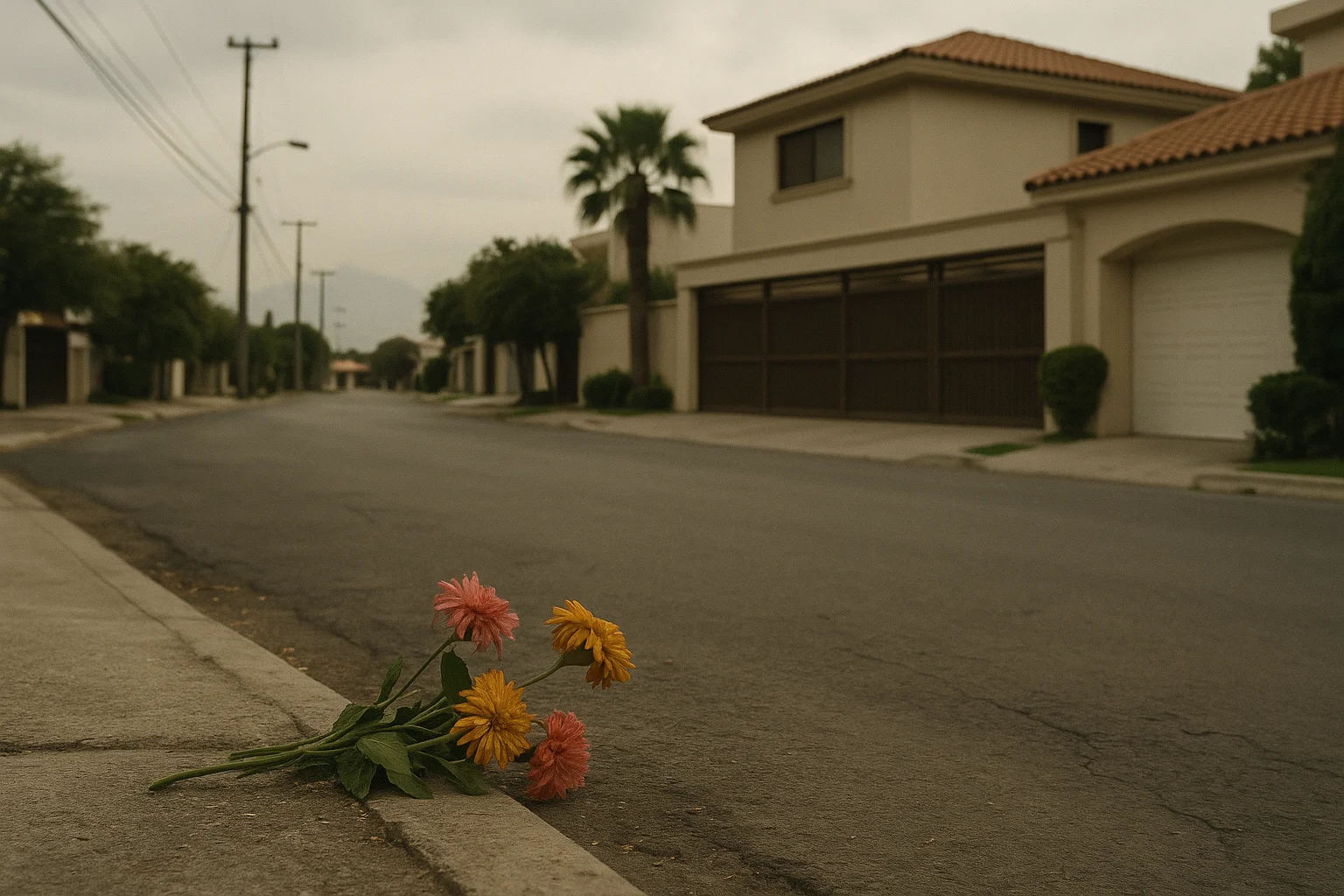
The Cumbres Case
by: The Calamity Calendar Team
March 2, 2006
The Neighborhood No One Expected
On the morning of March 2, 2006, the quiet, tree-lined streets of the Cumbres neighborhood in Monterrey, Mexico, held an eerie quiet. Residents of this upscale enclave, accustomed to serenity and a sense of invulnerability, awoke to news that rattled the very core of their reality. Before long, whispers turned into waves of speculation: a crime scene marked with police tape and raw emotion had broken the façade of calm.
It wasn’t just another headline. This was the story of Diego Santoy Riveroll, a young man whose actions within the Peña Coss family home would make him a central figure in one of Mexico’s most notorious criminal cases—the Cumbres Case.
A Relationship Gone Sour
At the heart of this tragic event was a relationship beset with turmoil. Diego Santoy Riveroll and Katia Peña Coss were once the picture of young love, finding each other in the bustling, vibrant city of Monterrey. But as time went on, the passion that bound them slowly eroded. Friends and family noticed the frictions, speculations of a breakup circulated, but no one forewarned the violent crescendo that would follow.
Katia, a member of the city's upper middle class, was part of a family that personified the Monterrey dream—prosperous, comfortable, and seemingly out of harm's way in their well-off neighborhood. However, it was this very relationship, laden with tension and unmet expectations, that would invite tragedy through their doorstep.
A Day Marked by Violence
On that fateful day, Diego entered the Peña Coss residence. The details remain stark and haunting. Diego was not a stranger to the walls he infiltrated; nonetheless, what followed was grotesque—a stark departure from any semblance of reason or restraint.
Tragedy unfolded swiftly. Diego’s turmoil was wielded through acts of irreversible violence as he took the lives of two innocent souls: 3-year-old Erik Azur and 7-year-old María Fernanda, Katia’s younger siblings. The unspeakable brutality of the act shook not just the family but an entire community that had never associated their neighborhood with such horror.
Thanks for subscribing!
Katia, though physically unharmed compared to her siblings, emerged as a central figure and witness, offering investigators valuable insights into the incident. Her testimony carried the weight of reality, unraveling before an audience eager for answers.
The Ripple Effect in Monterrey
In the aftermath, Monterrey stood in introspection, grappling with questions that had rarely been posed before. How could something so barbaric occur in such a secure, affluent environment? The repercussions were felt far beyond the confines of the Peña Coss household. They unraveled discussions on security, domestic violence, and the invisibility of tension concealed behind closed doors in wealthy neighborhoods.
The media coverage was unrelenting. The peculiar narrative—a murder embedded in a tale of love gone wrong in an otherwise serene locality—caught the public's attention and imagination. Legal proceedings provided their own drama, with the courtroom becoming a theater of regret, pain, and a search for justice.
The Pursuit of Justice
Justice did, ostensibly, prevail. Diego Santoy Riveroll's capture following the crime initiated a lengthy judicial process intensely covered by the media. By October 2010, Diego faced conviction and a sentence of 138 years in prison. However, under Mexican law, his imprisonment will stretch no more than 40 years, a legal nuance that often draws debate and scrutiny from those impacted by such crimes.
The Cumbres Case entrenched itself as an unsettling reminder of vulnerability in intimacy. The legal closure offered little solace but served as a necessary testament to accountability against domestic violence, particularly when hidden under layers of personal relationships.
An Era Stamped by Disturbed Reflections
Years have passed, yet the narratives from that day continue to absorb Mexico's true crime enthusiasts and societal analysts. To this day, Diego remains imprisoned, a symbolic figure of complex dysfunctionality—both a perpetrator and a poignant reminder of the chasms that can exist within human relationships.
The aftermath of those events left a scar not just on the Peña Coss family but also within the collective conscience of many across the nation. It lingered as a wake-up call for societal vigilance, especially in how we perceive personal relationships.
The Cumbres neighborhood, now returning to its everyday calm, recalls that solemn day in 2006 with inherent reflection. Life may persist within its confines, but the past serves as a somber backdrop—a constant illustration of the fragility masked by perceived security. A quiet reality that in an instant, everything can irrevocably change.
Stay in the Loop!
Become a Calamity Insider and get exclusive Calamity Calendar updates delivered straight to your inbox.
Thanks! You're now subscribed.